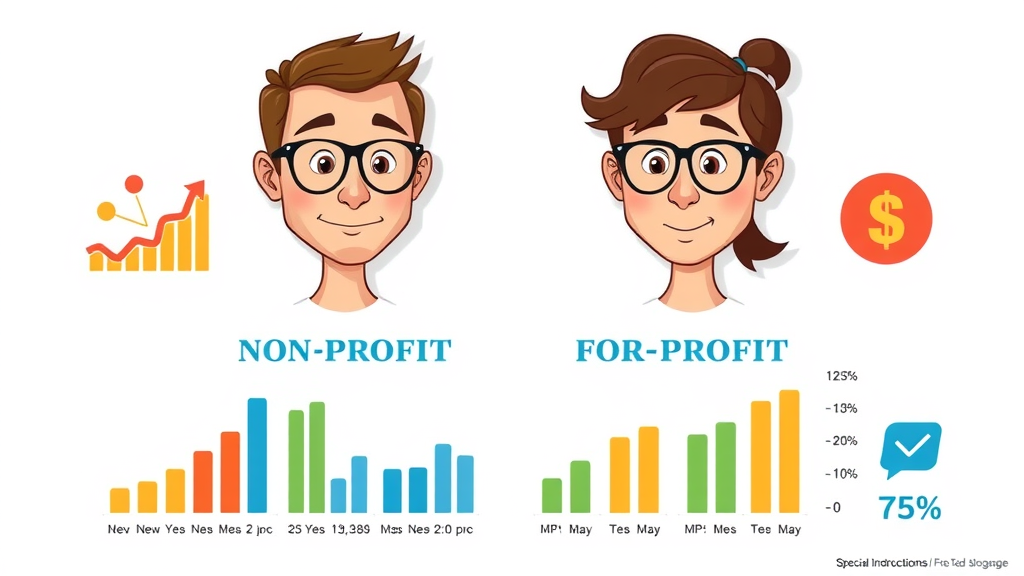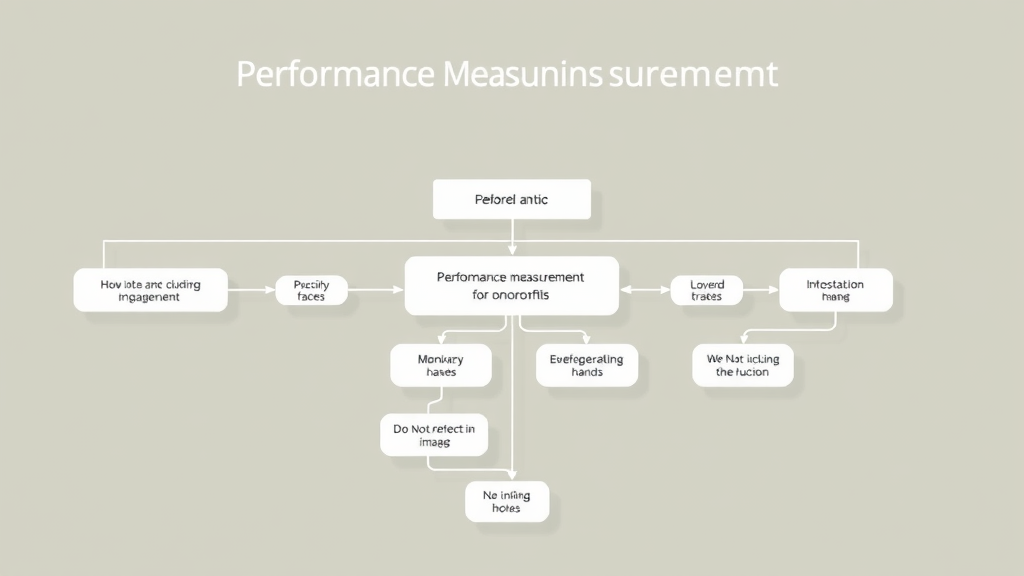Introduction: Why Performance Measurement Nonprofits Matter
- Startling statistic: Fewer than 30% of nonprofit organizations have a robust performance measurement system in place.

- Definition: Performance measurement in nonprofits refers to the systematic process of collecting, analyzing, and reporting data to assess how effectively an organization is achieving its mission and goals.
- Nonprofit organizations play a vital role in society, addressing crucial needs and making a difference. However, without measuring performance, even the most passionate teams can struggle to demonstrate their real impact or improve their strategies. Understanding and applying effective performance measurement systems is essential for accountability, maximizing resources, and sustaining donor trust.
What You'll Learn in This Guide to Performance Measurement Nonprofits
- The fundamentals and frameworks of performance measurement nonprofits
- Key performance indicators and metrics in nonprofit organizations
- How to build and use performance measurement systems effectively
- Best practices for donor retention, social impact assessment, and strategic planning
Understanding Performance Measurement Nonprofits: Core Concepts

What is Performance Measurement for Nonprofit Organizations?
Performance measurement for nonprofit organizations is the process of tracking and analyzing data related to key activities, outputs, and outcomes aligned with the organization’s mission. This approach ensures measurement systems support organizational goals—from resource allocation to community outreach and beyond. Nonprofits must focus on outcomes (changes or benefits resulting from their programs), not just outputs (quantities of services delivered), enabling decision makers, board members, and staff to make data-driven improvements and demonstrate accountability to funders. Performance measurement systems help nonprofit leaders communicate achievements, guide future investments, and ultimately achieve their goals more effectively.
A robust performance measurement system includes setting clear objectives, identifying appropriate performance indicators, and routinely reviewing program results. Unlike mere reporting, performance management integrates results with ongoing learning and adaptation, which is crucial for surviving in the ever-evolving nonprofit sector. When an organization regularly reviews its key performance indicators (KPIs)—such as retention rate, conversion rate, and social impact metrics—it positions itself to thrive and justify its existence to donors, beneficiaries, and the public.
Difference Between Nonprofit and Profit Organizations in Performance Measurement
While both nonprofit and profit organizations benefit from performance measurement, their goals and metrics differ fundamentally. Profit organizations primarily focus on financial outcomes—revenue, profitability, and return on investment are central. Nonprofit organizations, on the other hand, prioritize mission-driven outcomes such as social impact, community well-being, and public benefit. Transparency in reporting is also more critical for nonprofits, as they must demonstrate responsible stewardship of donor funds and grants.
Nonprofits must also measure impact—the lasting change affected by their services—rather than solely financial gain. This involves aligning goals and performance measurement systems with the strategic plan and ensuring transparency through rigorous reporting. Effective communication of performance data builds trust with donors, inspires board members, and fosters long-term relationships in the nonprofit ecosystem.
Building a Performance Measurement System for Nonprofits
Key Elements of an Effective Performance Measurement System
- Defining organizational mission and objectives: Ground your efforts in a clear statement of purpose and desired outcomes.
- Identifying and aligning performance indicators: Choose specific, measurable KPIs that reflect both outputs and outcomes related to your mission.
- Deploying measurement systems: Implement tools and techniques, such as dashboards, performance tracking software, and regular reporting processes, to collect and analyze data across all departments.

| Aspect | Profit Organizations | Nonprofit Organizations |
|---|---|---|
| Primary Goal | Profit Maximization | Mission & Social Impact |
| Key Performance Metrics | Revenue, ROI, Profit Margin | Outcome, Impact, Efficiency, Donor Retention |
| Accountability | Shareholders, Investors | Donors, Board, Community |
| Reporting | Financial Statements, ROI Reports | Impact Reports, Transparency, Stakeholder Communication |
| Resource Allocation | Growth, Profit Generation | Mission Fulfillment, Community Benefit |
Performance Indicators and Metrics for Nonprofit Organizations

Defining Key Performance Indicators (KPIs) for Nonprofits
- Examples of performance indicators: Outcome metrics (e.g., people served, lives improved), output metrics (e.g., meals delivered), impact (long-term community change), and efficiency (cost per outcome, program expense ratio).
- Setting benchmarks and targets: Establish realistic, data-informed benchmarks for each KPI, then track progress toward those targets using performance dashboards and periodic reviews.
Defining key performance indicators for nonprofits starts with aligning each KPI to the organization’s core mission. For instance, an education nonprofit might track student graduation rates (outcome), while a hunger relief charity monitors total meals distributed (output) and cost per meal (efficiency). Setting clear benchmarks ensures that staff, board members, and donors all understand what success looks like, allowing the organization to make data-driven decisions and continually improve. Importantly, KPIs should be reviewed at regular intervals—monthly, quarterly, or annually—to allow course corrections and pinpoint which strategies actually drive social impact.
Without actionable KPIs, measurement systems are incomplete. Many successful nonprofits use a performance measurement system to combine both quantitative data (such as numbers served) and qualitative impact (stories of change). This powerful combination not only helps the team refine its programs but also strengthens donor communications and grant applications by clearly showing the value being delivered.
Top Performance Metrics to Track in Nonprofit Organizations
- Donor retention rate: Percentage of donors who give year after year, indicating satisfaction and loyalty.
- Social impact measurement: Evidence-based indicators of how services are changing lives or addressing key needs in the community.
- Conversion rate: Percentage of supporters who become financial donors after engagement activities.
- Engagement through social media: Measures of online growth, such as follower increases, content shares, and campaign-driven actions.
Tracking performance metrics such as donor retention rate, conversion rate from supporters to donors, social media engagement, and measurable social impact is crucial for modern nonprofit organizations. By regularly monitoring these metrics, both leadership and staff can identify what’s working and what isn’t—enabling responsive, data-driven management that adapts to the needs of donors and beneficiaries. Modern performance measurement nonprofits integrate these metrics directly into their dashboards and reporting systems, ensuring everyone is focused on outcomes that matter most.
Quote: “Data-driven decisions don’t just increase accountability; they transform an organization’s capacity to deliver life-changing results.” – Jane Miller, Nonprofit Performance Expert
Implementing Performance Measurement Systems in Nonprofit Organizations

Steps to Launch a Performance Measurement System
- Step-by-step guide for launching a measurement system:
- Assess organizational readiness and needs.
- Define mission-aligned goals and KPIs.
- Select appropriate tools (software, templates, dashboards).
- Engage board members and staff in training.
- Establish data collection and reporting routines.
- Review and refine based on feedback.
- Roles of board members and staff: Board members set strategy and demand accountability; staff manage implementation, data tracking, and analysis to ensure the measurement system runs smoothly.
Launching a strong performance measurement system in a nonprofit organization requires a collaborative approach. Board members provide strategic oversight and champion a culture of data transparency, while staff execute the day-to-day work of collecting and analyzing data. A clear plan, comprehensive training, and effective tools lay the foundation for sustainable performance measurement nonprofits can depend on.
Measurement systems don’t succeed overnight. They rely on continuous improvement—regular feedback, iterative updates, and the support of every team member. Over time, these systems help organizations make more informed choices about resource allocation, program delivery, and outreach efforts, propelling mission achievement forward.
Best Practices for Performance Measurement in Nonprofits
- Continuous improvement and feedback loops: Schedule routine reviews of performance metrics to identify challenges and successes, adapting strategies as needed.
- Clear communication to stakeholders: Transparently share results and insights with donors, board members, and the broader community to reinforce trust and engagement.
To maximize the benefits of a performance measurement system, nonprofits should foster a culture of continuous improvement. Regularly soliciting feedback from team members, donors, and clients uncovers insights that can refine processes and improve impact. Equally important is transparent communication—providing clear, honest updates ensures everyone understands how their support contributes to organizational progress. Performance measurement nonprofits that prioritize these practices consistently achieve stronger outcomes and donor loyalty.
Software automation, regular meetings, and user-friendly dashboards can help streamline data collection and make results accessible to all. Combining these tools with open channels for feedback and communications ensures that the measurement system does more than track numbers—it becomes a driver of growth and sustainability.
Retaining Donors and Measuring Donor Retention Rate in Performance Measurement Nonprofits

Why Donor Retention Matters in Nonprofit Organizations
- Techniques to measure and improve donor retention rate:
- Calculate the donor retention rate by comparing the number of repeat donors to the total number of donors year-over-year.
- Enhance retention through regular communication, personalized acknowledgment, and sharing impact stories.
- Use donor management systems to track donor histories and identify trends.
Donor retention is a vital metric—retaining current supporters costs less than acquiring new ones, and repeat donors often give more over time. Calculating donor retention rate involves dividing the number of donors who gave again this year by last year's total number of donors. Improving donor retention requires proactive outreach, personal recognition, and demonstrating clear outcomes, all of which are supported by robust performance measurement systems.
Nonprofit organizations that make donor retention a performance priority not only strengthen their funding stability but also deepen relationships that power future campaigns. Frequent updates, impact reports, and donor-centric events further boost engagement, building a loyal supporter base central to long-term success.
Using Social Media and Engagement Metrics in Performance Measurement
- Tracking social media metrics as performance indicators: Monitor engagement rates, content shares, click-throughs, and supporter growth to evaluate outreach effectiveness.
- Case studies on successful engagement: Highlight examples of nonprofits that boosted donations or expanded reach after improving their social media strategy.
In today’s digital landscape, social media engagement has become a core performance indicator for nonprofits looking to broaden their reach and activate new supporters. By tracking metrics such as post engagement, audience growth, and conversion rate from online followers to actual donors, organizations can fine-tune their campaigns for greater results. Case studies abound of nonprofits who, after adopting new content strategies or using analytics tools, have measurably increased both awareness and donations—a testament to the power of real-time digital feedback.
Social media data, when integrated into a larger performance measurement system, offers instant insight into what motivates action. By leveraging these analytics, nonprofits ensure that every outreach effort is purposeful and supports overall impact goals, from fundraising events to advocacy campaigns.
Strategic Planning and Data-Driven Decisions in Nonprofit Performance Measurement

Aligning Strategic Plan with Performance Measurement Systems
- Examples on how strategic plans drive key performance outcomes: Align program activities with the nonprofit’s vision, then measure actual progress through performance data.
A strategic plan is only as effective as its ability to translate vision into action. Successful performance measurement nonprofits embed KPIs directly into organizational planning, ensuring every goal is measurable and tied to specific outcomes. For example, if a strategic plan prioritizes expanding outreach, performance data might track the number of new partnerships formed or the increase in beneficiaries served. This close integration keeps everyone focused on what matters and turns abstract goals into tangible impact.
Continuous alignment between strategy and measurement systems enables leadership teams to pivot quickly in response to changing circumstances or new opportunities. Regular reviews guarantee programs stay on track, while any shortfalls or challenges are identified and addressed early—preventing wasted resources and reinforcing a results-driven culture.
Implementing Data-Driven Decisions for Social Impact
- How measurement systems influence program outcomes and funding: Use reliable data to improve program effectiveness, demonstrate accountability, and enhance chances of securing grants or major gifts.
Data-driven decisions empower nonprofits to prioritize programs that create the greatest social impact and make the case for funding with confidence. By correlating outcomes with investment through measurement systems, organizations can demonstrate not just what they do, but why it matters. This approach meets the increasingly rigorous demands of donors, grant-makers, and government entities, all of whom want to see evidence of true results.
Incorporating data into decision-making isn’t just about increasing efficiency—it elevates the entire organization’s ability to achieve their goals, amplify resource allocation, and adapt to new challenges. Over time, this commitment to measurement and accountability becomes a potent differentiator in a competitive nonprofit landscape.
People Also Ask: Answers to Common Performance Measurement Nonprofits Questions

How do you measure the performance of a non-profit organization?
- Detailed explanation: Nonprofits measure performance using a combination of outcome-based and output-based metrics, such as the number of individuals served, donor retention rate, and success stories. First, they set clear organizational goals aligned with their mission. Then, they select appropriate KPIs and utilize tools like dashboards or dedicated software to gather and analyze data. Performance reviews, meetings with board members, and transparent reporting further ensure these insights lead to improved programs and greater social impact.
A best-in-class performance measurement system involves ongoing monitoring, analysis, and communication. By making data central to every decision, nonprofits maximize their effectiveness and cultivate trust with donors, funders, and the wider community.
What are KPIs for nonprofit organizations?
- Definition and examples: KPIs for nonprofits are specific metrics that reflect the success of organizational programs and strategic objectives. Examples include number of beneficiaries reached, donor retention rate, funds raised per campaign, program efficiency ratio, and engagement through social media. These indicators help organizations manage operations, communicate results, and guide future strategy.
KPIs make it possible for nonprofits to shift from subjective “gut feelings” to objective performance management—fueling a culture of continuous improvement, accountability, and mission fulfillment.
What are the three commonly used metrics to measure nonprofit efficiency?
- Cost per outcome: Measures the total expenses spent to achieve a single key result (e.g., $10 per meal served).
- Program efficiency ratio: Calculates the percentage of funds spent directly on program services as opposed to administrative or fundraising costs.
- Fundraising efficiency: Assesses how much is raised for every dollar spent on fundraising activities, helping optimize donor management strategies.
These efficiency metrics offer donors, board members, and regulators insight into how effectively the organization deploys resources, spotlighting best practices and areas for improvement.
What are the four types of performance measures?
- Input measures: Resources invested, such as staff time, funds, or facilities.
- Output measures: Units of service delivered, like meals, training sessions, or workshops.
- Outcome measures: Immediate changes achieved, such as knowledge gained, jobs secured, or individuals housed.
- Impact measures: Long-term change in society or the community attributable to the nonprofit’s work.
Using a blend of all four types of performance measurement ensures organizations not only track activities but also evaluate the results and broader significance of their work.
Lists: Tools and Templates for Performance Measurement Nonprofits

-
Top software for performance measurement systems:
- Salesforce Nonprofit Cloud
- Bloomerang
- Qgiv
- Charity Navigator Tools
-
Essential templates and checklists:
- Annual KPI tracking spreadsheets
- Impact reporting templates
- Board performance dashboards
-
Recommended reading and frameworks:
- “Measuring Social Impact: A Guide for Nonprofits” by the Stanford Social Innovation Review
- The Theory of Change Template
- Balanced Scorecard for Nonprofits Toolkit
These resources make it easy for organizations—regardless of size—to adopt professional-grade performance measurement systems quickly, avoiding common pitfalls and saving valuable staff time.
FAQs: Performance Measurement Nonprofits
-
What is the difference between outputs and outcomes?
Outputs are the direct, quantitative products of your organization’s activities (e.g., number of workshops held). Outcomes are the changes or benefits that result from these activities (e.g., increased literacy rates among participants). -
How often should nonprofits review their performance data?
At a minimum, review performance data quarterly; ideally, combine monthly or real-time dashboards with deeper annual analyses to ensure ongoing improvement and strategic alignment. -
How can small nonprofits leverage measurement systems with limited resources?
Focus on a few mission-critical KPIs, use free or low-cost tools (like Google Sheets or Airtable), and engage partners or skilled volunteers to handle data collection and analysis tasks. -
What are the most common mistakes in nonprofit performance measurement?
Measuring only outputs, ignoring the importance of outcomes and impact; lack of stakeholder communication; and failing to adapt systems based on feedback or real-world results. -
How can performance data support grant applications?
Compelling, credible data demonstrates your organization’s outcomes, efficiency, and impact to funders, making applications stand out in competitive grant processes.
Key Takeaways: Performance Measurement Nonprofits

- Systems and clear metrics are vital for nonprofit impact
- Donor retention and engagement must be measured and optimized
- Strategic and data-driven decisions create lasting organizational success
Conclusion: Taking Action with Performance Measurement Nonprofits
- Recap of main points and encouragement to implement performance measurement nonprofits best practices
- Highlight the importance of ongoing evaluation and adaptation
Get started today with a performance measurement system, and ensure your nonprofit’s success through continuous learning, strategic adaptation, and total accountability.
Next Steps: Connect with an Expert on Performance Measurement Nonprofits
- Call me the Chaplain 786-333-5270
Sources
- https://www.stanfordsocialinnovationreview.org/
- https://www.nptechforgood.com/
- https://charitynavigator.org/
- https://ssir.org/articles/entry/the_new_normal_of_nonprofit_measures
To deepen your understanding of performance measurement in nonprofits, consider exploring the following resources:
-
“Nonprofit Balanced Scorecard: Guide to Measuring Performance” (software4nonprofits.com): This guide details the development of a balanced scorecard tailored for nonprofits, emphasizing the alignment of performance metrics with organizational missions.
-
“Measure4Change Performance Measurement Playbook” (urban.org): Offered by the Urban Institute, this playbook provides strategies to enhance performance measurement capacities, fostering accountability and equity within nonprofit organizations.
These resources offer practical frameworks and insights to effectively measure and communicate your nonprofit’s impact.
 Add Row
Add Row  Add
Add 




Write A Comment